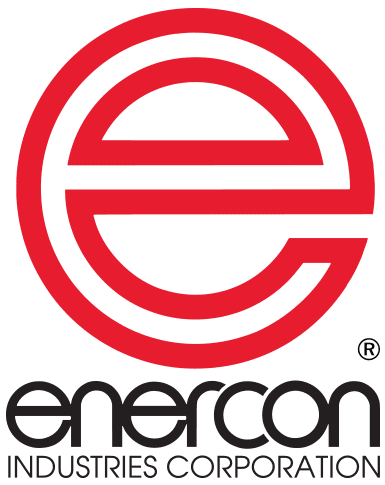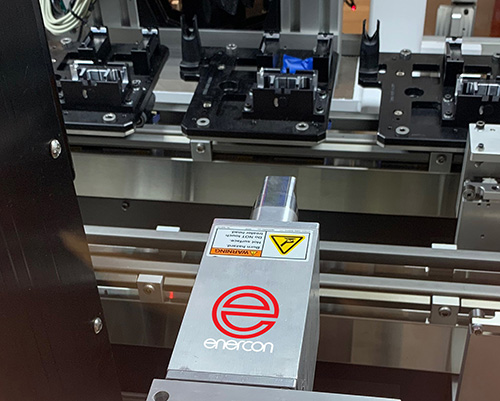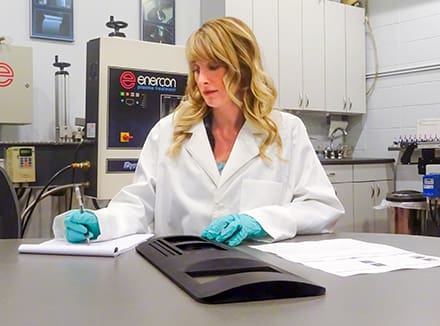New Blown-ion™ 500 Plasma Surface Treating Technology Enables Rockwell Automation’s Switch from Print-and-Apply Labels to In-Line Digital Printing
When Rockwell Automation moved its contactor and relay production back to Milwaukee, Wisconsin, it had to develop an entirely new process for the changing volumes and available space. The new highly automated assembly line would also be a showcase of Rockwell’s automation capabilities, featuring Rockwell drives, motors, Independent Cart Technology (ICT), PLC’s, HMI’s, sensors, and…
Read MorePlasma, Flame & Corona Pretreatment for Surface Treating Plastics
Generally, plastics have chemically inert and nonporous surfaces with low surface tensions. This makes them nonreceptive to bonding with inks, adhesives, coatings, and other substrates. Polyethylene and polypropylene for example have very low surface energy. Pretreatment of these and other engineered plastics improves bonding prior to printing, coating, and laminating. The best type of surface…
Read MoreAdvances In Adhesion With Co2-Based Atmospheric Plasma Surface Modification
Abstract The use of gas and/or liquid-phase carbon dioxide (CO2) with atmospheric plasma discharge surface pretreatment technology can remove micron and submicron particulates and hydrocarbon-based contaminations on plastics and metals. The cleaning process is based upon the expansion of either liquid or gaseous carbon dioxide through an orifice. The paper provides an understanding of the…
Read MoreClean is good, but is it good enough for successful adhesion?
Smart manufacturers recognize the importance of a clean surface when bonding components. If a part is not clean, the adhesive will bond to the surface contamination rather than directly to the surface itself. Manufacturers commonly use a solvent to clean the surface. However, this isn’t always enough to produce the desired adhesive outcome. A clean…
Read MoreHow and why plasma and flame surface treating improve surface adhesion.
Common adhesion impediments found on surfaces. Non-porous and hydrophobic surfaces have low surface energy with few available bonding sites due to low levels of charged ions on the surface. Additionally, any type of surface contamination affects adhesion negatively. This contamination can include material additives & release agents which can migrate to the surface. Clean, Etch…
Read MoreGetting Started with Flame Plasma
What’s in the eBook? Learn how flame plasma is helping users improve product quality, and increase production speeds. See what Enercon customers are saying “We’ve integrated Enercon flame treaters and we really enjoy working with Enercon because of their depth of knowledge in surface treating.”Jerry Schmit, Sr Applications Engineer, Midwest Engineering Solutions
Read MoreAtmospheric Plasma and Flame Surface Treatment for Medical Applications
Get insight on how medical device manufacturers are using atmospheric plasma to eliminate adhesion challenges. What’s in the eBook? Learn how atmospheric plasma is helping users improve product quality, and increase production speeds. See what Enercon customers are saying “For medical printing applications, it’s imperative to follow the defined protocols. Enercon’s experience with medical device…
Read MoreAn Overview of Surface Treatment for Three-Dimensional Objects
If you’ve attempted to print, label, or otherwise decorate a three-dimensional (3-D) product, you’ve probably been frustrated by an ink or adhesive that refused to adhere to the part’s surface. You may have tried different types of ink or adhesive formulations to get the job done, perhaps even used chemical primers or batch-treating processes. Still,…
Read MoreSurface Activation Systems For Optimizing Adhesion To Polymers
Many experiments have been performed globally to investigate ways of improving adhesion to polymers. This paper discusses current atmospheric surface activation systems, appropriate measurements of wettability and adhesion, over-treatment effects and surface analysis techniques relative to optimizing the adhesion of inks, paints, coatings and adhesives to polymer surfaces. Recommendations for improved activation by substrate and…
Read MoreBonding Styrenic Copolymers to Replace PVC
The desire to find a cost-effective, yet environmentally friendly alternative to PVC is the focus of a new technical paper: Bonding Styrenic Copolymers and Thermoplastic Elastomers in the Quest to Replace PVC. The paper details current research on the benefits of using light-curable adhesives and surface treatment technology to optimize bond strength of competitive high…
Read More










